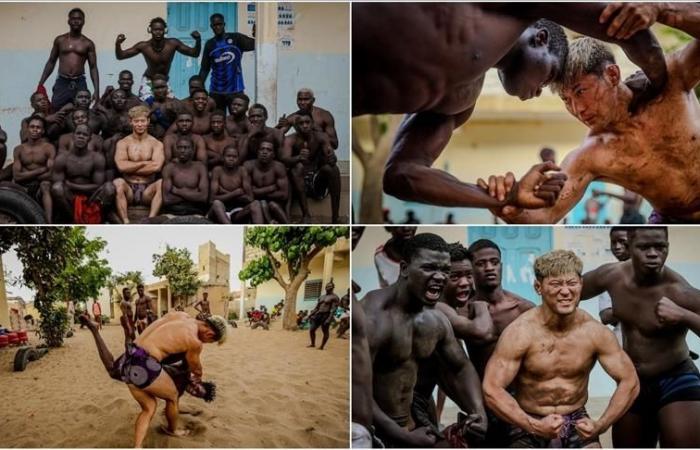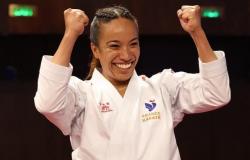
AA / DAKAR / FATMA ESMA ARSLAN
The Japanese wrestler Shogo Uozumi, who lives in Senegal, learns the traditional Senegalese struggle while teaching children the Greco-Roman Olympic struggle.
Shogo Uozumi, or “Songo Tine” as it is known locally, came for the first time to Senegal in 2017 with the Japanese International Cooperation Agency (JICA).
Uozumi, who worked as a volunteer instructor for children for 2 years in the city of Thiès, 70 kilometers from Dakar, and who returned to Tokyo after the expiration of his mandate, participated in the protection team of Hiroshi Hase, then a member of the House of Representatives of Japan.
He decided to return to Senegal in 2022 when Hiroshi became governor of the Ishikawa prefecture.
Since 2022, Uozumi, 31, who has also undergone university training in struggle, teaches children in Thiès voluntarily, while specializing in the Senegalese struggle, known as “Laamb”.
Present in Dakar since January to gain more experience in the Senegalese struggle and hosted with a Senegalese family from the Yoff district of the district, Uozumi trains 5 days a week in the afternoon with the neighborhood wrestlers.
Uozumi, which has 524 thousand followers on Tiktok under the name of user “Japanese Songo”, is also appreciated by the Senegalese for its posts in the Local Volof on daily life in the country.
– “They did not think I was fighting because I was not tall like the Senegalese”
The AA journalist spoke with Uozumi, after training, about her future objectives and her projects in Senegal.
Uozumi stressed that when he arrived in Senegal, he realized that the culture of hospitality, known as “Omotenashi” in his country and “Teranga” in Senegal, was very similar, and that he easily adapted to the country because the Senegalese were more open and more social.
Senegalese wrestlers approached it with skepticism at the start.
“They did not believe that I was fighting because I was not as tall as the Senegalese, they said ‘your strength is not enough for us’, but over time, when I fought with them and saw my fighting techniques, they accepted me among them. I do not feel at all like a stranger”.
-– “I learn traditional struggle by teaching the Greco-Roman struggle”
Uozumi recalled that the Senegalese struggle is not included in the Olympic Games:
“My main objective in Senegal is to help children open up to the world by teaching them a style of international struggle such as grappling and preparing them for the Olympic Youth Games which will be held in Senegal in 2026. I continue to learn the traditional struggle while teaching grappling to children, my goal being to fight in the national arena where the biggest tournaments of the country take place. Senegalese wrestlers for MMA (Mixed Martial Arts) and Kick Boxing tournaments around the world, there are Senegalese wrestlers that I sent to MMA tournaments in Japan and returned with serious success. “
“In Senegal, the struggle is not only a sport, it is a way of life,” he said, adding that wrestling enthusiasts should absolutely come to Senegal to discover the traditional struggle.
– The Senegalese struggle, from post-harvest entertainment to a national sport
The traditional struggle in Senegal, known as “Laamb” in the local volof language, dates back to the 14th century.
The traditional struggle, which appeared to entertain the ethnic group of the Sérères working in agriculture at the end of the harvest season, is also known to be used in ceremonies intended to prepare the men of the Sérères for war.
There are two versions of the traditional sand struggle, one that allows wrestlers to strike each other and the other which prohibits blows.
The Senegalese struggle, which combines physical struggle and acrobatics, is won when part of the opponent touches the soil.
The traditional struggle, which began to professionalize in the 1990s, is today the most followed sport in the country after football.
* Translated from Turkish by Tuncay çakmak
Only part of the dispatches, which the Anadolu agency distributes to its subscribers via the internal diffusion system (HAS), is broadcast on the AA site, in a summary manner. Please contact us to subscribe.







